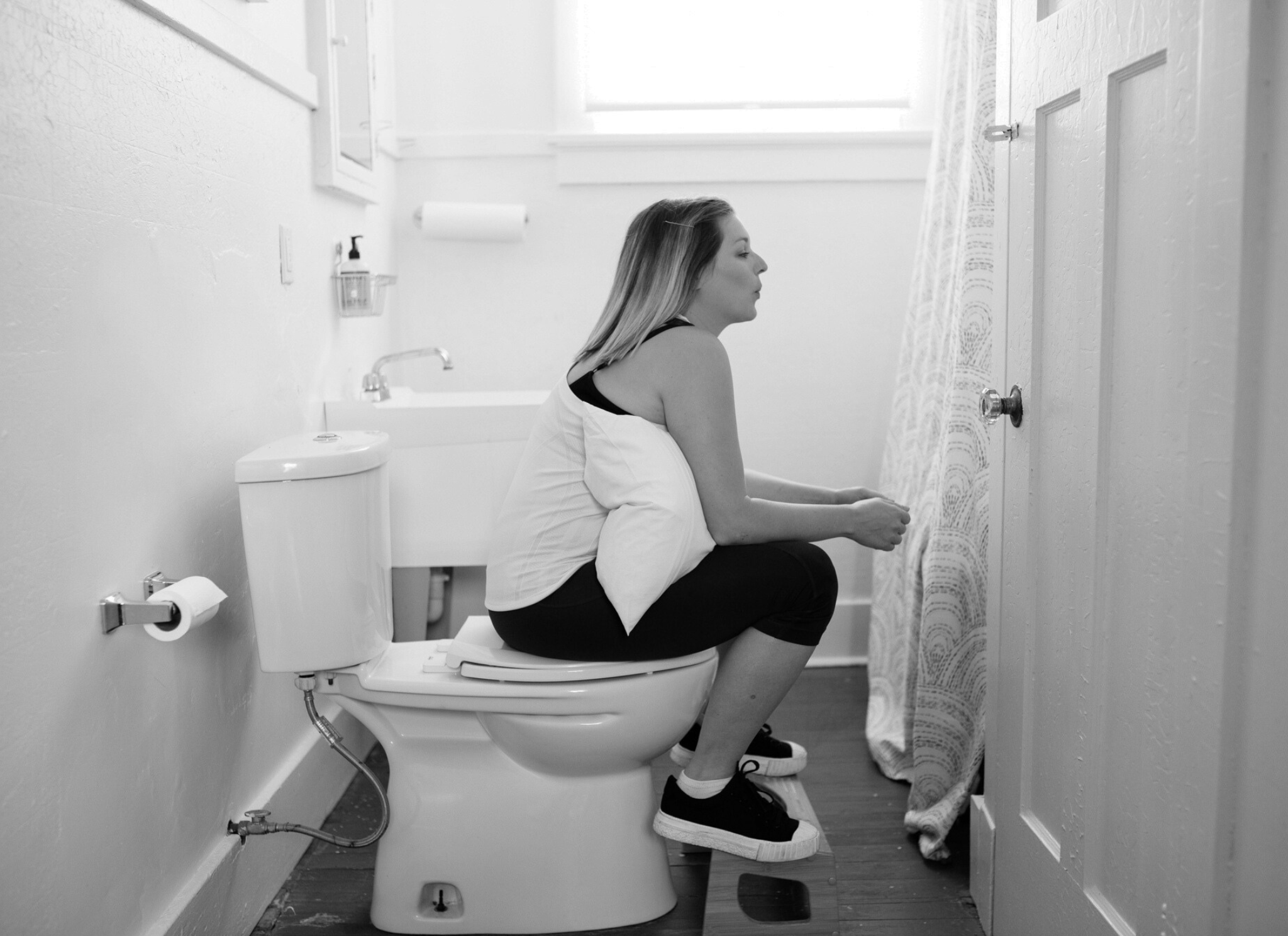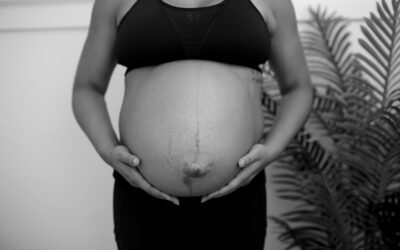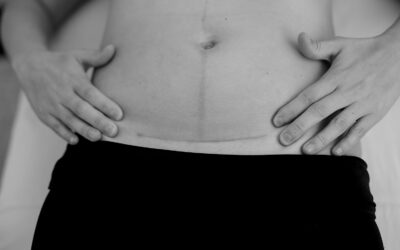After childbirth, there are many new stressors, like infant feeding… and wearing your OWN diapers. One stressor that can be surprising is the first postpartum poop!
The idea of anything passing through a newly healing pelvic floor can be scary and unwelcome. That 1st poop after delivery can be painful if you’ve had tearing or stitches. It may be difficult or slow to move if you’ve had surgery or pain medication.
But pooping is normal and healthy, and postpartum bowel movements don’t have to be scary.
How to Poop Postpartum
#1 Remember Pooping Is Normal
First, remember that bowel movements are healthy and normal. Try to welcome it.
Your mindset impacts how your body reacts. Being positive reduces the chances of having a fearful physical reaction. Sometimes, just being aware of the topic is enormously helpful in improving the experience.
#2 Hydration Makes For Happy Poops
Drink plenty of water and well nourished. Proper hydration and nutrition keep your tissues healthy, your intestinal lining happy, and your stool consistency normal.
Stool softeners or magnesium supplements can also assist. This is because the medication used for surgery can cause a sluggish digestive system and lead to postpartum constipation. Proactively ask for these in the hospital after birth or start taking on Day 1 if you are already home.
Also try to eat high fiber foods, as these can help with constipation.
#3 Proper Pooping Posture Makes All The Difference
Practice good pooping posture.
This is so easy and fundamental for good bowel movements after birth and should become a regular part of your toilet set-up. To improve the angle of the rectum for pooping, have a step-stool under your feet. We want to get your knees higher than your hips, in a squatted position.
Squatty Potty makes stools just for this purpose, but you can also use a kiddie step-stool, books, etc.
Make sure you EXHALE as you bear down to poop instead of holding your breath. Try exhaling like you are blowing out birthday candles to avoid holding your breath. Pooping should involve gentle pushes, not straining.
How to Poop After a C Section
For Cesarean births, apply pressure over the abdomen with a pillow. This supports the healing incision while you poop. It also supplements the muscles of the abdominal wall that normally help to regulate pressure while pooping.
Breathing For Better Postpartum Pooping
Practice diaphragmatic breathing. You can perform it day one postpartum to start re-connecting to your core and reduce stress. Diaphragmatic breathing increases oxygen to our tissues. Good blood flow is vital for muscle function and tissue healing.
Diaphragmatic breathing helps to reduce the sympathetic nervous system’s activity associated with stress. Stress from new responsibilities, pain, or disability can inhibit the “rest and digest” signals, which includes signaling to poop. We tend to get a better signal for a bowel movement when we are relaxed. So diaphragmatic breathing can assist in this way.
Lastly, diaphragmatic breathing also improves mobility of the abdominal wall and pelvic floor. Breath work can help to both relax and strengthen the abs and pelvic floor muscles.
You can do diaphragmatic breathing several times throughout the day (for several minutes at a time). Do it before going to the bathroom, and also while sitting on the toilet when it’s time to go. Here’s how to do it:
- Lay down or sit comfortably supported.
- On each inhale, allow the ribcage and belly to inflate (INHALE = INFLATE).
- On each exhale, allow the ribcage and belly to recoil (or flatten) naturally.
- Try to breathe as slowly and deeply as possible without strain. You should find that the more time you breathe, the slower and deeper you can breathe comfortably.
Postpartum pooping shouldn’t be an extra stressor in your life – if you need a little help along the way, The Vagina Whisperer has convenient virtual consultations with certified physical therapists that you can access from the comfort of your own home, on your schedule.
Happy Pooping to You!




